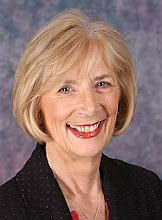Falling in love, statistically speaking
by Jessica Irvine, Sydney Morning Herald, February 24, 2010
I’m thinking of getting billboards made up. But meanwhile, here it is.
Deep down I always suspected that the secret to true love would be unlocked by a university mathematics professor. Turns out Australia’s very own statistical Cupid works right here in Sydney, at the University of NSW.
Professor Bruce Brown, a statistician, has figured out a formula to help men and women decide the perfect time to get married. How long should you wait to pop the question?
Brown’s formula draws on the mathematical theory of ''optimal stopping'', which helps people decide when to take a particular action to maximise rewards. It is a formula that has applications in a wide field of endeavours, including medicine and clinical trials.
So for those of you who spent Valentine’s Day agonising about when would be the best time to propose, or be proposed to, here is the formula.
First, decide the earliest age at which you would consider getting married, say 25. Then decide the latest age, say 35. Figure out the difference between the two, in this case 10 years.
Then multiply this result by the magical number 0.368, which in this example gives you roughly three years and eight months. Add this number to your lowest marriage age, 25, and this will give you your optimal proposal age, 28 years and eight months in this case.
What then? According to Brown: ''Ideally, you should not propose to anyone before you hit this age but afterwards you should prepare to pop the question to the very next girl you date – as long as she’s the best of the bunch so far.''
It’s up to you to figure out the probability that he or she will say yes.
The Irvine Index
1477Year in which Archduke Maximilian of Austria gave a diamond ring to Mary of Burgundy, starting the tradition of diamond engagement rings.
118,756
Number of men who cursed his name in 2008. This is also the number of marriages in 2008.
2.1
Percentage rise in couples getting married in 2008, compared with 2007. The number has been rising relatively steadily since 2001.
1.6
Percentage drop in divorces in 2008, compared with 2007.
4000
The melting point, in degrees Celsius, of diamonds.
2002
Year in which the UN introduced the Kimberley Process to stop the trade in ''blood'' diamonds.
26.3
The median age of men marrying for the first time in 1989.
29.6
The median age of men marrying for the first time in 2008.
24.2
The median age of women marrying for the first time in 1989.
27.7
The median age of women marrying for the first time in 2008.
65
Percentage of couples married by a civil celebrant in 2008.
77.7
Percentage of couples who lived together before marriage in 2008.
12.3
The median length, in years, of marriage to divorce in 2008.
48.8
Percentage of divorces granted in 2008 which involved children under the age of 18.
17
In a disclosure I hope will help harness the power of public scrutiny, the number of times I have been to the gym this year.
21
Number of times I should have been, to keep on course with my new year’s resolution to go three time a week, averaged over the year. Plenty of time.
Sources:www.kimberleydiamonds.com.au, Australian Bureau of Statistics, my calendar at home.














